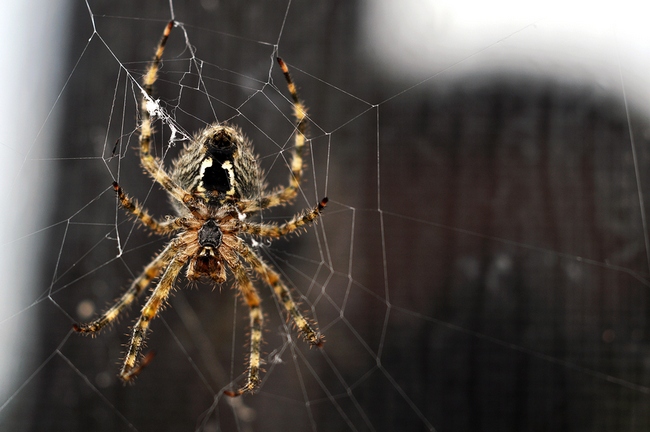- Make It Yourself Lavender Heart-Shaped Bath Bombs!
- 20 Things You Never Knew About “Down There”
- 12 Best Foods For Those Suffering From Arthritis Pain
- 12 Personal Hygiene Mistakes Almost Everyone Makes (Mom Never Told You About #4!)
- 15 Medicinal Plants And Herbs From The Cherokee People
- 12 Mind-Blowing Benefits Of Drinking Coconut Water During Pregnancy
- 12 Outstanding Winter Foods That Won’t Fatten You Up Like A Christmas Turkey
DIY Insect Traps: No Chemicals, No More Bugs, No Diseases!
2. Spiders
Most spiders are harmless to humans and beneficial to the garden. However, there are some spiders that are venomous, and some people can’t stand the sight of spiders inside their house. Most spiders can be successfully removed by placing a cup over them, then sliding a piece of paper under the cup and setting them free outside.
You can start by sealing up cracks and holes around your home. Check the windows, basements, and foundations for places that spiders can enter your home and seal them off. Spiders have something like taste buds on their feet and legs. They can be super sensitive to certain smells so mix up this little remedy and spray it in places where you usually find spiders in your home and around your patio. This should convince them to find more pleasant living arrangements.
In a medium sized spray bottle, mix up 2 cups of water, a squirt of dish soap, and 10 or 15 drops of strong smelling essential oil such as lavender, lemon, citronella, or tea tree. Mix this up and spray it liberally where you see cobwebs, spiders, around your patio, and under sinks. This spray is safe enough to use anywhere, but remember to spray regularly to keep the scent strong.
SEE ALSO: 12 Tips to Protect Yourself from Bug Bites
3. Wasps
We all know that pollinators are important for our food productions but there are also people who are deathly allergic to bee stings (this includes wasps!) At least bees only sting one time after they feel they have been seriously threatened, but wasps, well, they are the insect that just keeps stinging and it hurts so much more than a bee sting ever could! When wasps are around your property in great numbers, they can be dangerous to your family and pets.
First, be on the lookout for nests. If you don’t have any, think about hanging up a few fake nests made of plastic. Wasps are very territorial and they won’t make a nest or hang around if they think someone else has already staked a claim. If you should find nests, even the beginning of a nest, wait until dusk, when wasps aren’t as likely to fly, and douse the nests with a very strong jet of water. Knock the nest and its inhabitants to the ground and drown them all.
If none of these measures work, make a trap.
Take an empty, clear, 2 liter plastic bottle. Cut the top off the bottle and coat the inside of the bottle with a bit of cooking oil. This will keep the wasps from climbing out. Put the spout (the drinking end) of the bottle upside down inside the bottom half of the bottle. Tape it in place with a bit of packing tape. Punch a few holes in sides of the bottle for hanging. You can use an ice pick or hole punch and then run some twine or wire through the holes. Pour two or three inches of soda pop or juice into the bottom of the trap. Wasps and hornets will fly into the small drinking hole to get to the juice but they can’t find their way out and they drown. Hang the bottle far away from places where children play or pets sleep as it’s sure to draw quite a few wasps.
Continue to Page 3

































